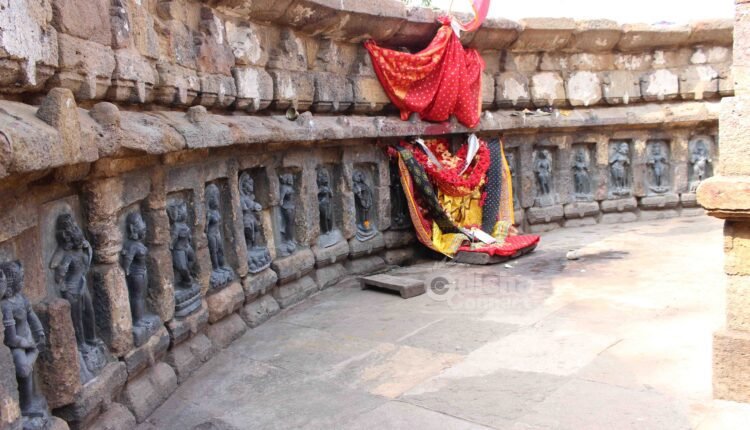Chausath Yogini Temple, located at a distance of about 20 km from Bhubaneswar in Hirapur, is one of the four surviving Chausath Yogini shrines in India. Of the remaining three, one is located in the Bolangir district of Odisha while the other two are in Madhya Pradesh. The shrine is locally known as Chausathi Yogini, meaning 64 Yoginis (incarnations of Goddess Durga).The presiding deity of this holy place is Goddess Mahamaya, who is considered to be one of the Yoginis. Hence, the shrine is also called the Mahamaya Temple. The daily prayer and rituals in the temple includes the worship of Bhumandala that is the five elements of nature – water, sky, fire, earth and ether. The Yogini practice has been known to include Yoga along with the practice of tantrism, having a strong connection with tribal and rural traditions.
History of Chausath Yogini Temple Bhubaneswar
This temple is believed to have been built by Queen Hiradevi of the Bhaumakar dynasty in the 9th Century AD. However, with time, the temple had lost its glory before it was discovered and restored by renowned historian Kedarnath Mohapatra in 1953, to its present form.Every year in the month of December, the Chausathi Yogini Mahotsav is organized near the temple. Nrutya Prativa, a city-based cultural organization, with support from the Odisha Tourism Department conducts this three-day event, in which classical dance and vocal artists from across the country perform and mesmerize the audience.
Architecture of Chausath Yogini Temple, Hirapur Bhubaneswar
Presently under the supervision of the Archeological Survey of India, this shrine has a distinct architecture featuring a circular open air sandstone structure, far from the traditional Kalinga style of temple architecture. Located on the banks of Bhargavi River, it is one of the smallest Chausath Yogini temples with a height of only 8 feet and a diameter of 30 feet. The entrance of the temple is quite narrow and low in height. Only one person can enter easily at a time and needs to lower the head while entering. The outer wall of the doorway to the shrine is carved with two doorkeepers (dwarapalakas) on each side



Comments are closed.